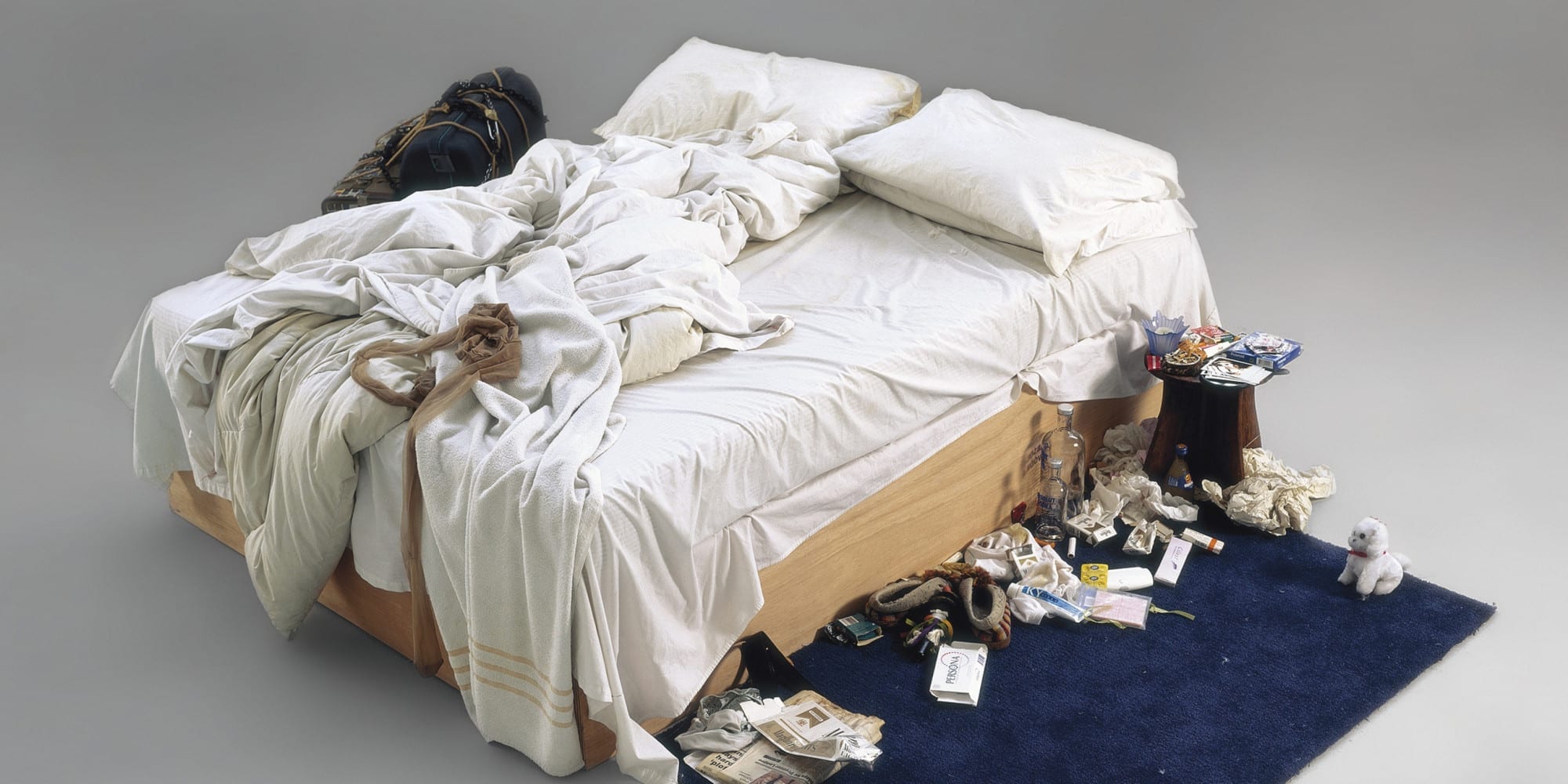
The 90s were a great time for music, fashion, and art. It was in the 90s that the YBAs (Young British Artists) came to prominence after Charles Saatchi gave patronage to various artists at Damien Hirst’s Freeze Art Show (not to be confused with The Frieze Art Fair), and it was this that entrenched London as the buzzing art centre of the world, taking New York’s claim.
Tracey Emin is one of the most controversial artists to come from the YBAs. Seen as both a socialite (friends with Kate Moss) and an artist, it isn’t a surprise that nearly 20 years on, people are still discussing her work and its merits, as well as Emin herself. There are very few artists that can strike up a debate as well as Emin (and the others are usually part of the YBAs). One of her most famous pieces that really catapulted her career is the installation piece ‘My Bed’, which has recently gone back to the Tate Britain and is free to go and view.
‘My Bed’ was created in 1998, and was shortlisted for the 1999 Turner Prize Award. While the piece did not win the TPA, it certainly gained notoriety and became the subject of praise and ridicule, a prop for performance pieces, and sold for groundbreaking prices – Saatchi even had a room in his house specifically for ‘My Bed’. ‘My Bed’ has gone full circle and is now, as mentioned, at the Tate Britain – its original home. A piece very worthy of going to see – it’s more impactful in person and it would be classed as one of those ‘to see before you die’ pieces.
‘My Bed’ has received criticism on the grounds that it is ‘self-indulgent’ or “not real art!”. By some art critics, ‘My Bed’ and Emin herself have been described as ‘self-degrading’, ‘exhibitionist’ and even ‘self-flagellating’: nothing that amounts to much praise. It does make one wonder if people are simply missing the point of the piece, or is conceptualism still something that people are getting used to?
Conceptualism is a form of art that relies more on ideas than on the physical body of work itself. ‘My Bed’ is an excellent contemporary example of this. At the time the piece was created, Emin was “at a point in my life when I was pretty low – I hadn’t got out of bed for four days.” ‘My Bed’ creates a narrative of Emin’s life at the time – in an almost Plath-esque way, Emin found a way to express her deepest feelings and share with the world what she was going through. All of her feelings and state of mind are conveyed within this one, raw, open, honest and personal piece.
So why would she display such personal things, such as her used underwear or empty bottles of vodka, to the general public? Many critics have found fault with this ‘exhibitionism’, but there’s nothing really innately wrong with it. For thousands of years, men have been using women as their subject, and Emin has reclaimed herself, her body and her life and turned the male gaze upside down. Her artwork is for herself, and those willing to understand it.
I went to see ‘My Bed’ at the Tate Britain – after years of talking about the piece and studying the piece, I finally had the chance to see it. A simple Google search shows you what the piece looks like, but despite knowing what it is that you’re going to see, it’s hard to fully prepare for how you’ll feel when confronted with a piece. Seeing Emin’s bed, I had no idea how I would feel when physically in front of it. When confronted by such a personal and intense piece it’s hard to fully grasp how you feel. Surrounded by artworks by Francis Bacon (chosen by Emin), ‘My Bed’ is everything you expect from an installation piece, it’s surrounding and you’re engulfed by the work. It’s as much an experience as it is an art viewing.
There is plenty of time to see ‘My Bed’ in the flesh, and form an opinion for yourself on the piece, and I would thoroughly recommend it. It one of the most honest, raw, passionate and tender pieces you could see.
Words by Selene
‘My Bed’ is available for viewing at the Tate Modern until June 2016.
Check out this website for more information about Tracey Emin